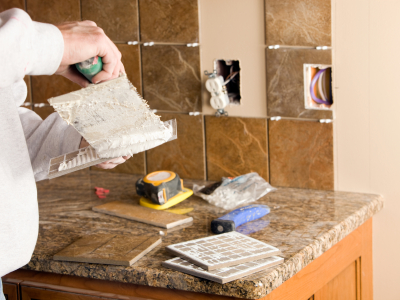This is an overview of the actions that construction lienors and property owners should take to protect themselves in the event that lienors are not paid for improvements they made to the owner‘s property.
Lienors Must Serve a “Notice to Owner” to Recover on a Claim of Lien
 Subcontractors, sub-subcontractors and materialmen who have not contracted directly with the owner to make improvements to the owner’s property must serve a “Notice to Owner” upon the owner and all parties listed in the “Notice of Commencement.” This notice must be served before commencing work or within 45 days after the labor, materials or services were first provided and before the owner pays the full amount due. The “Notice to Owner” should contain:
Subcontractors, sub-subcontractors and materialmen who have not contracted directly with the owner to make improvements to the owner’s property must serve a “Notice to Owner” upon the owner and all parties listed in the “Notice of Commencement.” This notice must be served before commencing work or within 45 days after the labor, materials or services were first provided and before the owner pays the full amount due. The “Notice to Owner” should contain:
- The lienor’s name and address
- A description of the owner’s real property
- A description of the services or materials provided or to be provided
Service of the “Notice to Owner” is a statutory prerequisite to recording a claim of lien. The lienor’s failure to timely serve the notice is a complete defense to enforcement of the claim of lien against the owner’s property.
“Notice to Owner” Rule for Manufacturers of Specially Fabricated Materials
A different “Notice to Owner” lien rule applies to contractors who specially fabricate materials. “Specially fabricated materials” are those that are specially-ordered or custom-made for a particular project and cannot be easily resold or used for another project. Many contractors mistakenly assume that the 45-day time period to serve the notice starts to run from the date the specially-made goods were delivered. In actuality, the contractor must serve the “Notice to Owner” within 45 days after the materials are assembled.
For example, if a property owner places an order for custom-designed kitchen cabinets on March 1 and the cabinet maker starts building the special cabinets on March 10 and intends to deliver them on June 1, then the cabinet maker must serve a “Notice to Owner” within 45 days of March 10, or be barred from pursuing a construction lien against the property.
Preventing Owner Liability to Construction Lienors
The amount of liability a property owner has to potential construction lienors depends on how much money has not been paid to subcontractors or materialmen who have made improvements to the owner’s property. Even if the owner has paid the general contractor the entire contract amount, if he has not paid all subcontractors and materialmen, the owner may be liable to them for amounts much more than the original contract amount.
Notice of Commencement
A property owner should sign, record and post a Notice of Commencement or NOC at the project site. This Notice contains the nature of the work, the legal description of the property and the names and addresses of the owner, contractor and any surety company. The NOC is effective for one year after it is recorded, unless otherwise stated in the notice. However, it is void if work is not commenced within 90 days of when it s recorded.
It is in the owner’s best interest to record a Notice of Commencement. If the notice is properly recorded, all construction liens relate back to the recording date, thereby making all construction liens equal in priority. If the notice was not properly recorded, liens will be given priority in the order in which they were recorded. If the owner fails to record a Notice of Commencement or makes payments after it is no longer effective, then all payments made to the contractor could be considered improper payments. Consequently, the owner could ultimately pay twice for the same work – once to the contractor and once again to any lienors.
Release of Liens and Contractor Affidavits
To avoid these unfortunate results, the owner should obtain a “Release of Lien” from every potential lienor who served a “Notice to Owner.” The owner should have these releases in hand to avoid making improper payments to the general contractor. The owner should also obtain a Contractor Payment Affidavit before making any progress payments. This affidavit lists the names of the subcontractors who have been paid in full and who have not been fully paid, along with the outstanding amounts due. I t is the owner’s responsibility to make sure all lienors who have served a “Notice to Owner” get paid. Therefore, to head off major problems in the future, the owner should strive to have as much information as possible about the account status of subcontractors, sub-subcontractors and materialmen.
Before making final payment to the general contractor, the owner should obtain a “Final Payment Affidavit.” Florida law requires the general contractor to furnish this sworn statement. The owner must not make final payment to the general contractor unless:
- The affidavit states that all lienors who have served a “Notice to Owner” have been paid in full;
- The owner has received the lienors’ releases;
- The owner has no reason to believe there are lienors out there who have not been paid; and,
- The “Notice of Commencement” is still effective.
If there are lienors who were not listed in the Final Payment Affidavit, but served a Notice to Owner, then the owner must pay them directly. Payments made directly to such lienors are usually proper. However, because Florida construction lien is law is complicated, the owner should consult with an attorney before paying lienors directly to avoid the possibility of making improper payments.